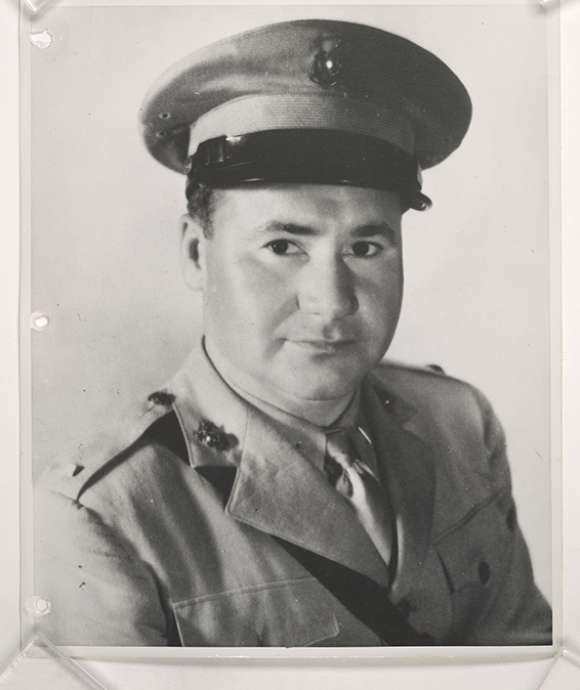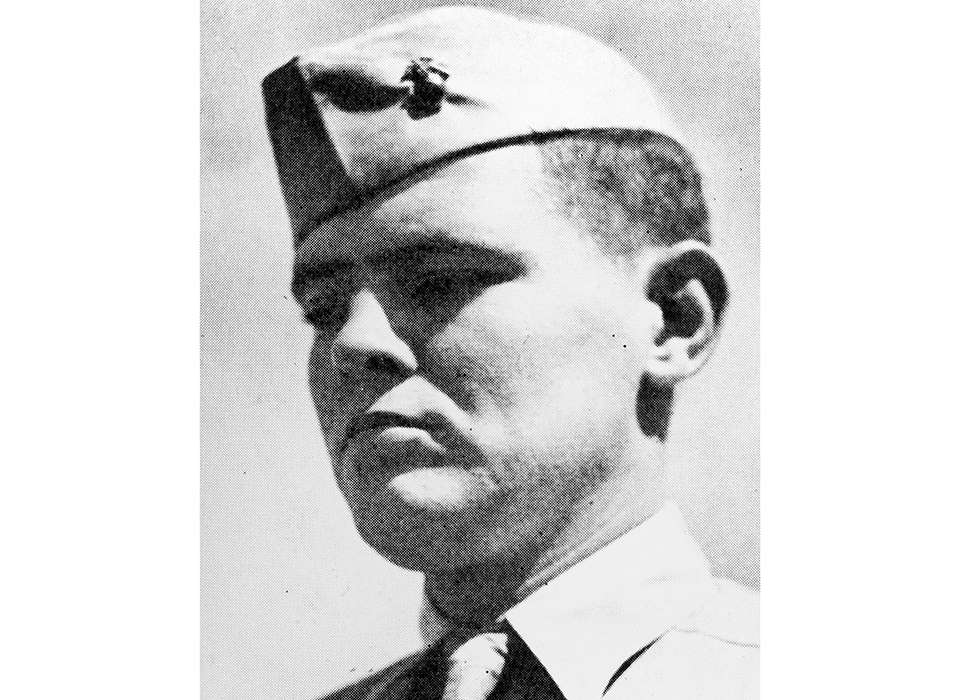Francis Pierce turned 17 on December 7, 1941, the day Japanese forces attacked Pearl Harbor. With his parents’ permission, Pierce joined the US Navy the next week. After training to become a corpsman, Pierce was assigned to the 4th Marine Division. When Pierce landed on Iwo Jima, he was a seasoned combat veteran, having cared for the wounded during the Saipan and Tinian campaigns, amongst others.
Over the course of two days (March 15-16, 1945) Pierce repeatedly put himself in the line of fire to draw attention away from wounded Marines. Although corpsmen were traditionally unarmed combatants, they were allowed weapons in order to defend the wounded. Shirking this “restriction,” Pierce repeatedly engaged the enemy. On the 16th, he led a patrol to knock out a sniper’s nest, was seriously wounded, but waived off treatment for himself so that he could cover wounded Marines with protective firepower as they were treated and evacuated. Over those two days, Pierce went above and beyond the call of duty many times.
Medal of Honor Citation
“For conspicuous gallantry and intrepidity at the risk of his life above and beyond the call of duty while attached to the 2d Battalion, 24th Marines, 4th Marine Division, during the Iwo Jima campaign, 15 and 16 March 1945. Almost continuously under fire while carrying out the most dangerous volunteer assignments, Pierce gained valuable knowledge of the terrain and disposition of troops. Caught in heavy enemy rifle and machinegun fire which wounded a corpsman and 2 of the 8 stretcher bearers who were carrying 2 wounded marines to a forward aid station on 15 March, Pierce quickly took charge of the party, carried the newly wounded men to a sheltered position, and rendered first aid. After directing the evacuation of 3 of the casualties, he stood in the open to draw the enemy’s fire and, with his weapon blasting, enabled the litter bearers to reach cover. Turning his attention to the other 2 casualties he was attempting to stop the profuse bleeding of 1 man when a Japanese fired from a cave less than 20 yards away and wounded his patient again. Risking his own life to save his patient, Pierce deliberately exposed himself to draw the attacker from the cave and destroyed him with the last of his ammunition Then lifting the wounded man to his back, he advanced unarmed through deadly rifle fire across 200 feet of open terrain. Despite exhaustion and in the face of warnings against such a suicidal mission, he again traversed the same fire-swept path to rescue the remaining marine. On the following morning, he led a combat patrol to the sniper nest and, while aiding a stricken marine, was seriously wounded. Refusing aid for himself, he directed treatment for the casualty, at the same time maintaining protective fire for his comrades. Completely fearless, completely devoted to the care of his patients, Pierce inspired the entire battalion. His valor in the face of extreme peril sustains and enhances the finest traditions of the U.S. Naval Service."

Medal of Honor Series
Read First Lieutenant Harry L. Martin's story next. He received a Medal of Honor for actions on March 26, 1945.
Kali Martin
Kali Martin is a former Research Historian of The National WWII Museum's Jenny Craig Institute for the Study of War and Democracy.
Cite this article:
MLA Citation:
APA Citation:
Chicago Style Citation:







![Max Fuchs, New York City cantor, sings as Rabbi Sydney [sic] Lefkowitz, Richmond, VA, conducts the first Jewish services from Germany.](/sites/default/files/styles/max_650x650/public/2025-10/image1.jpg)

